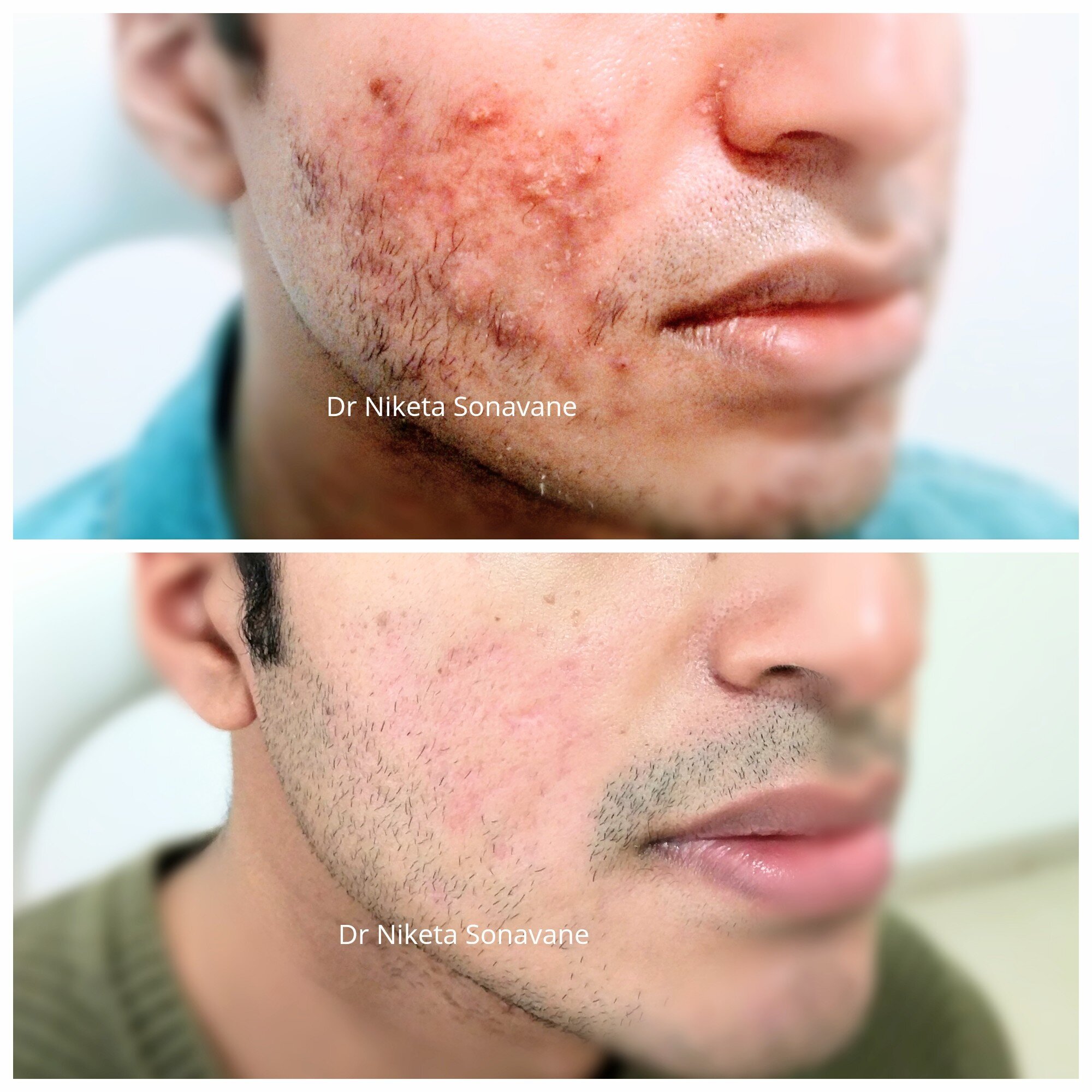Best Acne and Acne Scars Treatment: Restore Your Skin's Natural Beauty
Best Acne and Acne Scars Treatment: Restore Your Skin's Natural Beauty
Blog Article
Discovering Skin Problems: Determining and Treating Acne Scars for Healthier Skin
Acne marks represent a considerable issue for individuals seeking to maintain healthy skin, as they can impact both look and self-worth. Understanding the different kinds of marks, from atrophic to hypertrophic, is essential for determining suitable therapy alternatives.
Understanding Acne Marks
Recognizing acne marks is vital for any individual who has actually experienced severe acne, as these marks can have a lasting effect on both physical look and psychological health. Acne marks form when the skin goes through inflammatory responses throughout energetic acne sores. The severity of scarring is usually influenced by elements such as the sort of acne, its period, and individual skin characteristics.
The body's all-natural recovery procedure can cause either atrophic marks, which look like clinical depressions in the skin, or hypertrophic marks, which are increased and result from overproduction of collagen. In addition, the psychological toll of acne marks need to not be ignored; lots of individuals report sensations of shame, anxiousness, and decreased self-worth. This emotional concern can influence social communications and overall high quality of life.
Addressing acne scars requires an extensive understanding of their development and effect. Understanding of the capacity for lasting effects related to untreated scars can motivate individuals to look for appropriate therapies. Early treatment and efficient administration methods can considerably improve skin look and enhance emotional resilience, stressing the importance of understanding the intricacies bordering acne scars.
Types of Acne Scars
Acne scars can be classified right into distinct types, each exhibiting special attributes and needing specific therapy approaches. The main kinds of acne scars include atrophic, hypertrophic, and keloid scars.

Hypertrophic marks, in contrast, are elevated above the skin level and are the result of excessive collagen production throughout the recovery procedure. They usually continue to be within the borders of the initial acne lesion. Keloid scars are comparable however expand past the initial injury website, creating larger, elevated locations that can be agonizing or scratchy.
Recognizing these kinds of scars is crucial for selecting ideal therapy alternatives. Various scars might respond far better to particular treatments, such as laser therapies, fillers, or surgical treatments, emphasizing the importance of a customized strategy to acne scar management.
Determining Your Marks
When reviewing the appearance of your skin, it is crucial to precisely determine the kind of scars present, as this will certainly notify one of the most efficient therapy method. Acne scars normally drop right into two categories: hypertrophic and atrophic marks. Atrophic marks, which are the most usual, look like clinical depressions or imprints on the skin. These can better be identified right into ice-pick marks, boxcar marks, and rolling marks, each displaying distinct attributes and calling for different strategies for assessment.
Hypertrophic marks, on the other hand, are elevated and happen due to extreme collagen production throughout the recovery procedure. Acknowledging the particular attributes of your scars-- such as depth, structure, and width-- is essential for correct identification. In addition, consider the circulation of marks across your skin, as this can suggest the severity and period of the acne problem.
Engaging with a skin doctor can provide useful understandings into the nature of your Click This Link scars, aiding in the differentiation in between various types. A detailed understanding of your scars will eventually result in a much more customized and effective treatment strategy, making certain a clearer and much healthier complexion.
Treatment Choices Readily Available
Identifying the particular sort of acne scars present on your skin lays the foundation for discovering effective treatment options. Typical kinds of acne scars consist of atrophic (depressed), hypertrophic (raised), and post-inflammatory erythema.
For atrophic marks, choices such as chemical peels, microneedling, and laser resurfacing are commonly made use of. Chemical peels off use acids to get rid of the external layer of skin, promoting new cell development. Microneedling entails small needles that produce micro-injuries, boosting collagen manufacturing. Laser resurfacing targets harmed skin cells, boosting texture and tone.
Hypertrophic marks can be treated with corticosteroid injections to squash the scar or laser treatment to reduce soreness and enhance look. acne scars treatment. Silicone gel sheets and stress dressings might likewise help in handling raised scars
Additionally, facial fillers can momentarily fill up in clinical depressions from atrophic marks, while surgical excision may be appropriate for extreme instances. Each treatment choice has its benefits and considerations, making it important to consult with a dermatologist. They can give customized suggestions based on the kind and intensity of your scars, as well as your skin kind and total health and wellness.
Tips for Prevention
Efficient prevention techniques can significantly reduce the chance of establishing acne scars. Making use of non-comedogenic items assists avoid clogged up pores, which can exacerbate acne.
Preventing need to stand out or choose acne sores is important, as this can bring about deeper skin damage and boost the risk of scarring. Rather, consider utilizing a chilly compress or non-prescription treatments to decrease swelling and inflammation.
Sunlight protection is one more essential facet of prevention; ultraviolet (UV) rays can darken scars and impede the healing process. Using a broad-spectrum sun block with at the very least SPF 30 daily can protect the skin and promote also recovery.
Last but not least, preserving a balanced diet plan rich in vitamins, anti-oxidants, and minerals sustains skin health and healing. Remaining hydrated and handling stress levels can additionally play a considerable duty in lowering acne flare-ups. By carrying out these strategies, people can substantially lessen their possibilities of creating acne marks.

Final Thought
To conclude, understanding and recognizing acne scars is vital for efficient therapy and attaining much healthier skin. Numerous kinds of acne scars, including atrophic and hypertrophic scars, require certain treatments customized to private requirements. Treatment choices variety from chemical peels and microneedling to corticosteroid shots, highlighting the value of getting in touch with a skin doctor. In her explanation addition, taking on a gentle skin care regimen and shielding the skin from UV direct exposure can dramatically add to the avoidance of additional scarring and general skin health.
The body's natural healing procedure can result in either atrophic scars, which show up as anxieties in the skin, or hypertrophic marks, which are raised and result from overproduction of collagen. They are more separated right into three subtypes: ice choice scars, boxcar marks, and rolling marks. Acne scars usually drop into two classifications: atrophic and hypertrophic marks. These can additionally be classified right into ice-pick scars, boxcar marks, and rolling scars, each exhibiting distinct characteristics and calling for various approaches for analysis.
Different kinds of acne scars, including hypertrophic and atrophic home scars, require particular treatments tailored to specific demands.
Report this page